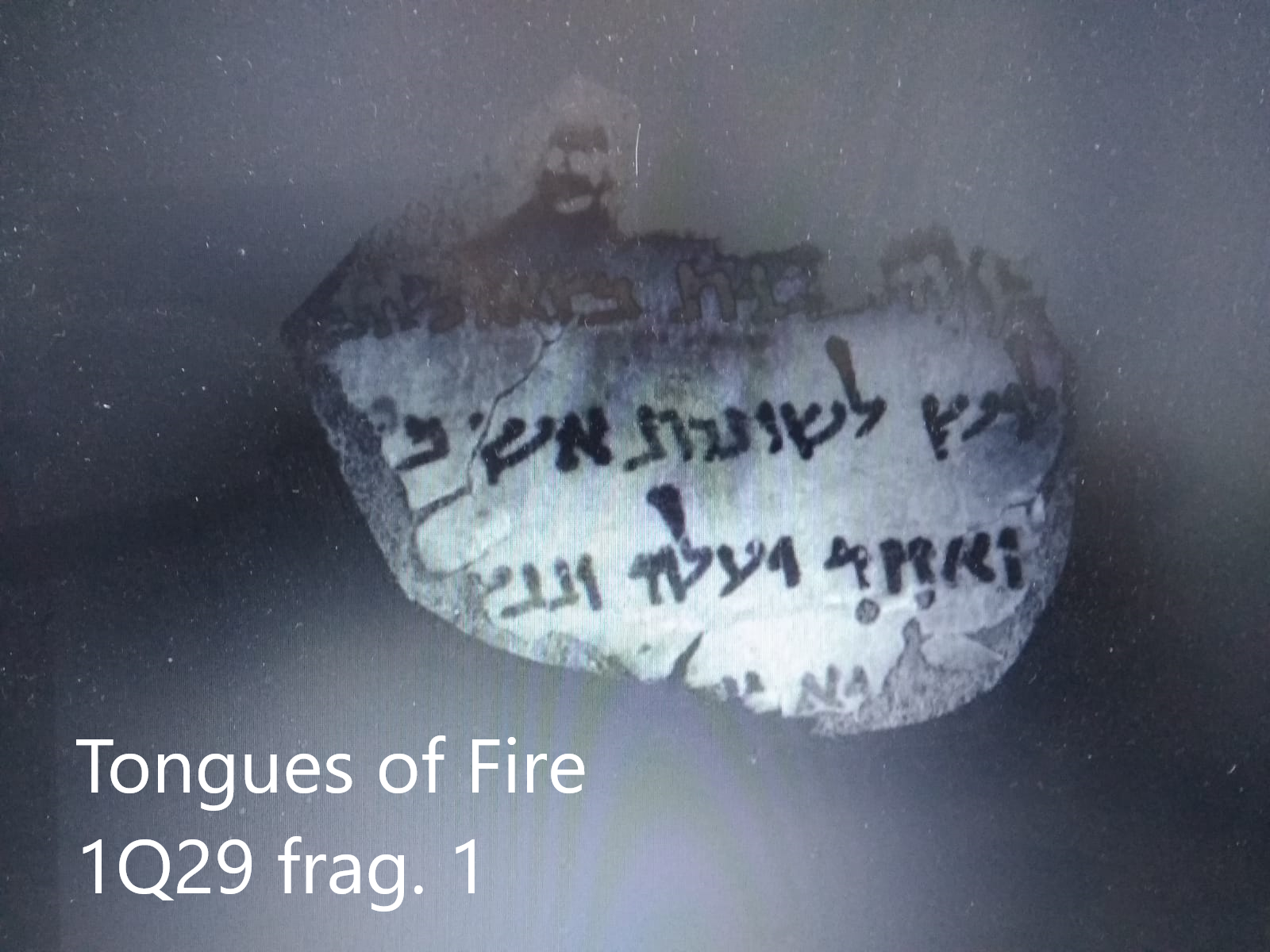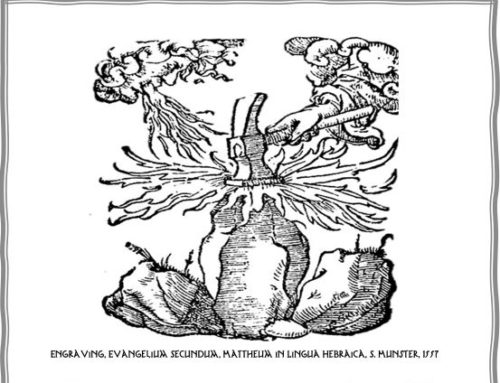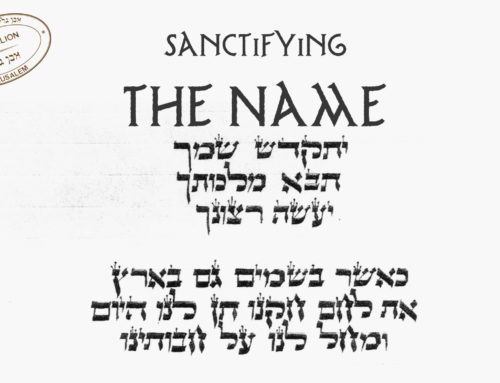“Tongues of Fire” inscription on 1Q29 Fragment DSS
“Then there appeared to them divided tongues, as of fire, and one sat upon each of them. And they were all filled with the Holy Spirit and began to speak with other tongues, as the Spirit gave them utterance.” Acts 2: 3-4 NKJV
Years ago, my son and I drove to the Dead Sea region of Qumran to see a cave where ancient scroll fragments, were found – mysterious texts describing “Lashonot Esh” “Tongues of Fire”. Could these Fragments illuminate our New Testament text? Shavuot or Pentecost, is a time to remember the giving of the Torah and the miracle of Israel “seeing the voices, and the flames” upon the mountain. Exodus 20: 18 YLT In Acts, we see the “tongues as of fire” resting on the heads of the believers.
Though baptism in the Holy Spirit with the evidence of speaking in tongues is repeated in the New Testament, the physical appearance of this fire occurred only one time. Modern scholars now argue “the House”, ha bayit, referred to in Acts 2:2 was the Temple. If correct, those “tongues as of fire” were visible to multitudes visiting Jerusalem. With this dramatic scene set, we can now examine the fragments. They describes a miracle involving the High Priest, also at the Temple, ministering in the Holy of Holies. As Israel waited for him to emerge, the fragment says, “He went forth with tongues of fire”. “ויצא בלשונות אש” “He [i.e., the high priest] shall go forth with [the ephod] with tongues of fire.”[1]
Scholars debate its meaning. Did “tongues of fire” rest on the High Priest? Were these flames literally visible?
Glen Menzies, a Pentecostal Scholar who has studied this fragment notes this in his article , Pre-Lucan Occurrences of the Phrase “Tongue(s) of Fire”, “Whatever else remains obscure, it is clear that the phrase “with tongues of fire” found in 2:1 of 4Q376 frag. 1 / 1Q29 frag. 1 demonstrates God’s presence with (or anointing upon?) the high priest.” Menzies, 49
The “tongues as of fire” in Acts clearly confirmed the priesthood and message of the believer as well as their consecration to be the dwelling place of God’s Holy Spirit. If the fragments describe a known miracle, would the people have understood this event as a transference of the Divine Presence from a temple of stone to portable tabernacles of flesh?
I. Confirming of the Message
The “tongues as of fire” of Acts 2 confirmed God’s presence, perhaps in a way that “tongues of fire” confirmed the high priest in the Holy of Holies. How appropriate that the miracle occurred during Pentecost. The Psalmist, speaking of Sinai’s divine visitation proclaimed, “The voice of the Lord hews out flames of fire.” Psalms 29: 7
II. Consecrating the House
The fire of God has appeared throughout Scripture to consecrate the Tabernacle, Temple, and its altars. (Leviticus 9: 24, II Chronicles 7: 1-2) On this unique day in Acts 2 however, the fire did not fall on a stone altar, it came upon EACH of the one hundred and twenty, consecrating believers not a building. Some in Israel had longed for this miracle of “mikdash adam”, to be a “human sanctuary” consecrated by the fire for God’s Holy Spirit. Acts 2: 4
Conclusion
The “tongues as of fire” in Acts 2, authenticated the message spoken in tongues to the multitudes, and the flame upon Peter confirmed a message which “cut to the heart”. The people cried out saying, “Men and brethren, what shall we do?” Peter said to them, “Repent, and let every one of you be baptized in the name of Jesus Christ for the remission of sins; and you shall receive the gift of the Holy Spirit. For the promise is to you and to your children, and to all who are afar off, as many as the Lord our God will call.” Acts 2: 37-39.
His flame still confirms and consecrates the believer. Evangelist Reinhard Bonnke said, “This anointing is a fire that was lit at the altar of Calvary, and those who receive it become wielders of the divine flame incinerating the works of Satan.” May we walk worthy of that flame, as representatives of the Holy Spirit dwelling in us. Have a blessed Shavuot / Pentecost!
[1] Menzies, Glen W. “Pre-Lucan occurrences…” Pneuma 22, no. 1: 27-60.
[2]Menzies 49






